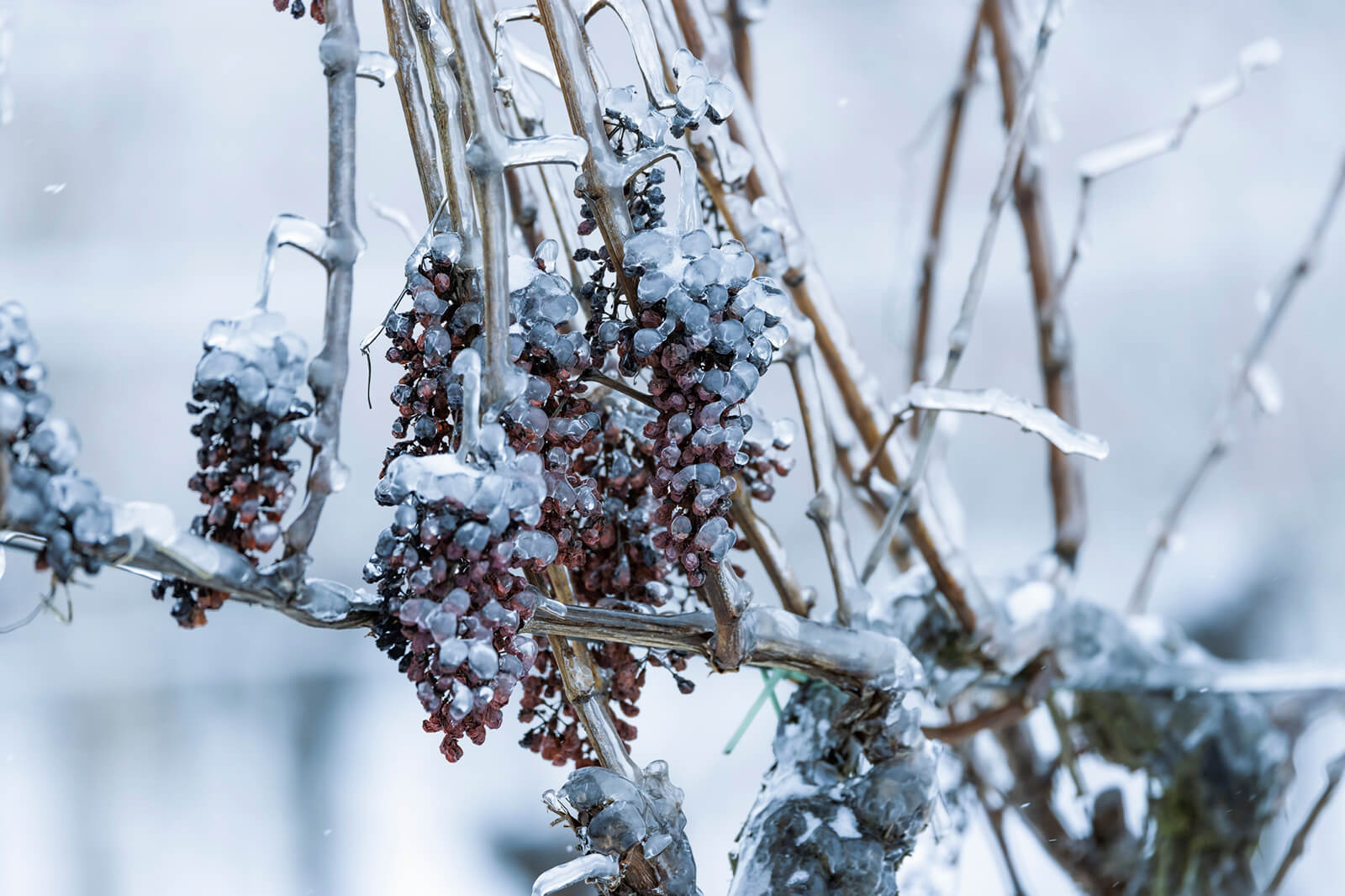Indulge in Winter's Liquid Magic: Ice Wine, Nectar of Winter's Chill

Ice wine, also known as Eiswein in German, is a unique and luxurious type of dessert wine that is produced from grapes that have naturally frozen on the vine. This winemaking process is a delicate dance with winter's chill, as the grapes must freeze while still on the vine to achieve the concentrated sugars and flavors that define ice wine.
Key Characteristics:
- Intense Sweetness: Ice wine is renowned for its intense sweetness, owing to the concentration of sugars in the frozen grapes.
- Flavor Complexity: The freezing process imparts a range of complex flavors, including notes of honey, tropical fruits, and floral undertones.
- Acidity Balance: Despite its sweetness, well-made ice wines maintain a balanced acidity, providing a refreshing contrast to the richness.
Harvesting Process:
- Ice wine production commences well before the harvest, involving meticulous vineyard selection and grape care. The ideal microclimate is one that provides reliable cold temperatures for grapes to freeze on the vine without harming them. Throughout the growing season, careful attention is paid to maintaining healthy grapes that can endure until the first frost.
- Harvesting ice wine grapes demands patience and precision. Timing is critical, waiting for a significant frost at temperatures around -7 to -8 degrees Celsius (19 to 17 degrees Fahrenheit). Hand-picking the frozen grapes during the early morning or overnight ensures their preservation, although this labor-intensive process can be costly.
- Pressing the frozen grapes is the next step, done while they remain frozen to extract concentrated, sugary juice, leaving behind frozen water. Fermentation of this sweet juice follows, a lengthy process due to the high sugar content, often resulting in an alcohol content not exceeding 12%. Alternatively, fermentation may be intentionally halted, creating a sweet wine with relatively low alcohol. After fermentation, the wine undergoes aging, filtration, and strict quality control before bottling. Strict regulations govern the entire process, adding to the complexity, and the unpredictable weather makes ice wine a risky venture for winemakers. However, the rich, sweet, and intensely flavored result makes it a risk many are willing to take.
Production Regions:
Ice wine is produced in regions with cold climates conducive to grape freezing. Notable regions include Germany, Canada (particularly in the Niagara Peninsula), Austria, and the United States (New York and Michigan).
Types of Grapes Used to Make Ice Wine:
- Grapes most commonly used to produce Ice Wine include several cool climate white grapes varieties like Riesling, Vidal Blanc, Gewürztraminer, Grüner Veltliner, and Chenin Blanc. These varietals tend to be naturally more acidic, which helps balance the wine so it’s not as syrupy when production is complete.
- Ice wine can be made from red grape as well; these are often from Cabernet Franc and Merlot.
- New World winemakers are also experimenting with other varieties these days, including Seyval Blanc, Pinot Blanc, and Chardonnay.
Savoring and Enjoying Ice Wine:
- Experience the world of ice wine as a sensory journey, from its visual allure to aromatic richness and captivating flavors. The distinct color, ranging from light yellow to deep gold, hints at grape type and aging. Older ice wines exhibit a darker hue due to oxidation during aging.
- The intense bouquet presents fragrances like lychee, pineapple, apricots, peaches, citrus, and honey, evolving with age into complex notes of dried fruit, nuts, and caramel. In taste, the wine balances intense sweetness with acidity, offering a clean finish.
- Serve ice wine chilled (6-10°C/43-50°F) to enhance acidity, using a small white or dessert wine glass for concentrated aromas. With significant aging potential, ice wine evolves over years or decades, gaining nuanced flavors. Proper storage at a consistent, cool temperature preserves its quality, and the high sugar content allows re-corking and refrigeration for several days after opening without significant flavor loss. Cheers to the evolving symphony of ice wine complexity! 🍷❄️
Comments
You know you want to
Sign Up For Our Newsletter
Keep up to date on the latest wine releases, events and promotions.